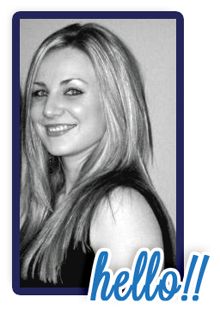“No one is born
hating another person because of the color of his skin, or his background, or
his religion. People must learn to hate, and if they can learn to hate, they
can be taught to love, for love comes more naturally to the human heart than
its opposite.”
-Nelson Mandela
 This week we learned about microaggressions, these include microassaults,
microinsults and microinvalidations. In the media segment from this week’s
course resources, Dr. Sue explains that microaggressions are defined as brief
everyday indignities, they may be verbal, behavioral or environmental and are
communicated intentionally or unintentionally. He further states that
microaggressions have an insulting message and often cause severe psychological
stress and harm because they portray views of inferiority/superiority and
inclusions/exclusions towards minority groups of people (Laureate Education,
2011). Dr. Sue explains that microaggressions often occur unintentionally and without
intended harm or malice however, there is still a consequence to the person
being subjected. These occurrences happen cumulatively, he states: “it is
constant acts of marginalization that affect one’s self-esteem and cause
individuals to feel displaced and on the rebound continuously” (Laureate
Education, 2011).
This week we learned about microaggressions, these include microassaults,
microinsults and microinvalidations. In the media segment from this week’s
course resources, Dr. Sue explains that microaggressions are defined as brief
everyday indignities, they may be verbal, behavioral or environmental and are
communicated intentionally or unintentionally. He further states that
microaggressions have an insulting message and often cause severe psychological
stress and harm because they portray views of inferiority/superiority and
inclusions/exclusions towards minority groups of people (Laureate Education,
2011). Dr. Sue explains that microaggressions often occur unintentionally and without
intended harm or malice however, there is still a consequence to the person
being subjected. These occurrences happen cumulatively, he states: “it is
constant acts of marginalization that affect one’s self-esteem and cause
individuals to feel displaced and on the rebound continuously” (Laureate
Education, 2011). An example of microaggression that I witnessed firsthand, occurred
when I was at the mall with two of my girlfriends. As we were walking outside
there was an Aboriginal man begging for money with a sign that said “Have no
money and starving- please be kind and help”. I would not have even noticed him,
he was quietly tucked away in a corner, if it wasn’t for a group of teenagers
who intersected us. One of the girls said “How do they need money- they don’t
pay for anything?!” While another teenage girl replied “I don’t know he
probably just wants booze”. I remember wondering if the reaction would have
been the same if it were a Caucasian man sitting with a sign asking for money.
In this scenario the man was marginalized into a stereotype that Aboriginal
people are drunks and have no reason to be poor. My best friend’s daughter is
Aboriginal and I worry about the stereotypes and discrimination she will face
growing up. For a city of 100,000 people, we have one of the highest rates of
hate crimes in all of Canada. Here is a link for the CBC article if interested http://www.cbc.ca/news/canada/thunder-bay/thunder-bay-ranks-second-for-reported-hate-crimes-1.2689832
It is disheartening that a country that claims to be proud to be multicultural
can exhibit such close-minded thinking, stereotyping, discrimination and
racism.
An example of microaggression that I witnessed firsthand, occurred
when I was at the mall with two of my girlfriends. As we were walking outside
there was an Aboriginal man begging for money with a sign that said “Have no
money and starving- please be kind and help”. I would not have even noticed him,
he was quietly tucked away in a corner, if it wasn’t for a group of teenagers
who intersected us. One of the girls said “How do they need money- they don’t
pay for anything?!” While another teenage girl replied “I don’t know he
probably just wants booze”. I remember wondering if the reaction would have
been the same if it were a Caucasian man sitting with a sign asking for money.
In this scenario the man was marginalized into a stereotype that Aboriginal
people are drunks and have no reason to be poor. My best friend’s daughter is
Aboriginal and I worry about the stereotypes and discrimination she will face
growing up. For a city of 100,000 people, we have one of the highest rates of
hate crimes in all of Canada. Here is a link for the CBC article if interested http://www.cbc.ca/news/canada/thunder-bay/thunder-bay-ranks-second-for-reported-hate-crimes-1.2689832
It is disheartening that a country that claims to be proud to be multicultural
can exhibit such close-minded thinking, stereotyping, discrimination and
racism.
This week I really listened to, and observed peoples’
interactions, reactions, facial expressions, body language and discourse in
various environments while completing everyday tasks and errands. I was truly
shocked at what I saw. I witnessed many people using terms like “that’s so gay”
and “that’s retarded” in almost every area I went. I saw people walking slink
far away from and Arab man as if they were fearful. What really spoke to me
about this experience is that quite often the people making discriminatory
comments were teenagers. This language has become so common place that people don't even realize the harm they are doing and the hurt they are causing. I believe for this very reason that the education
system needs to do more to teach children about tolerance, understanding,
awareness and appreciation of different cultures and ethnicities.
References
Laureate Education (Producer). (2011). Microaggressions in
everyday life [Video file]. Retrieved from https://class.waldenu.edu













